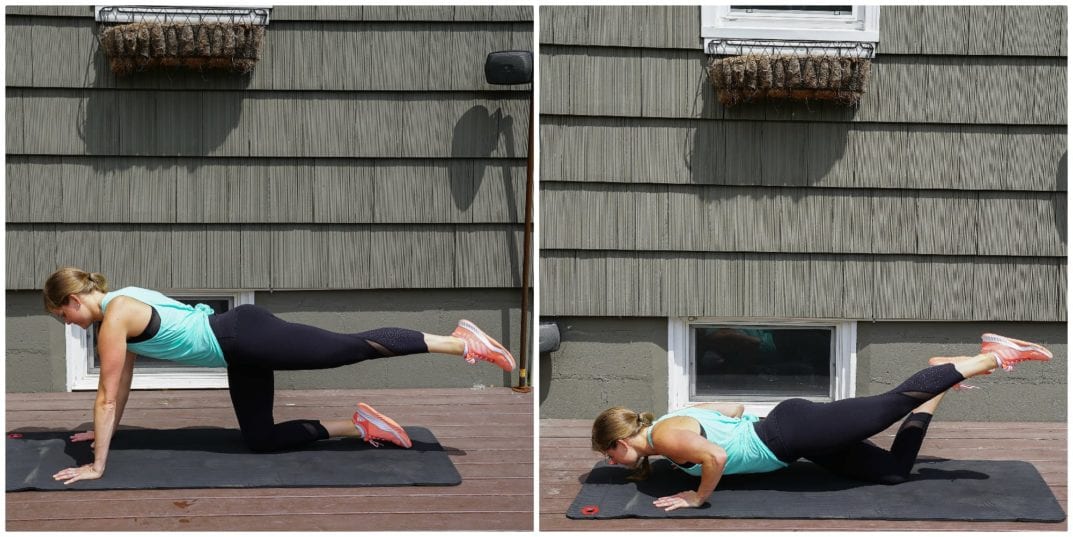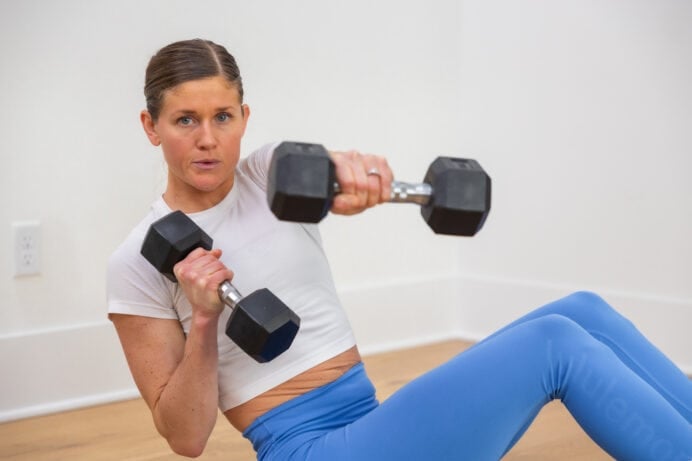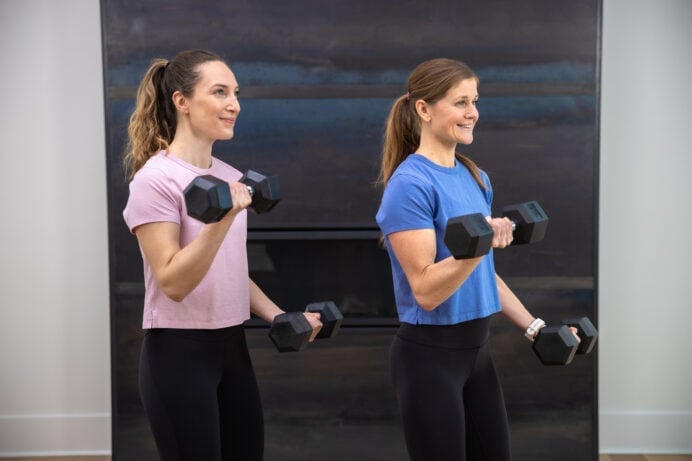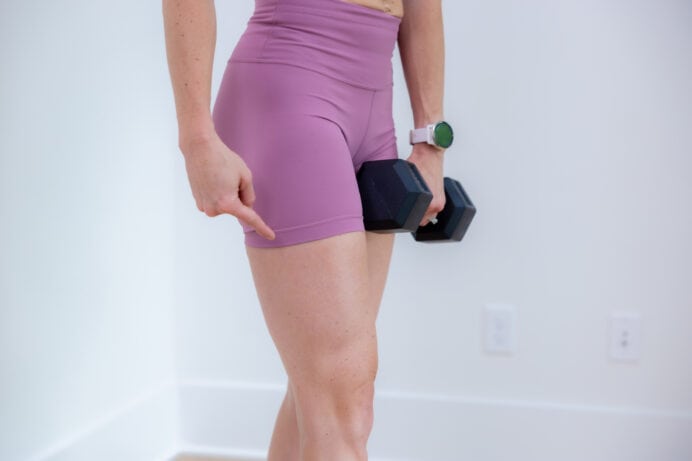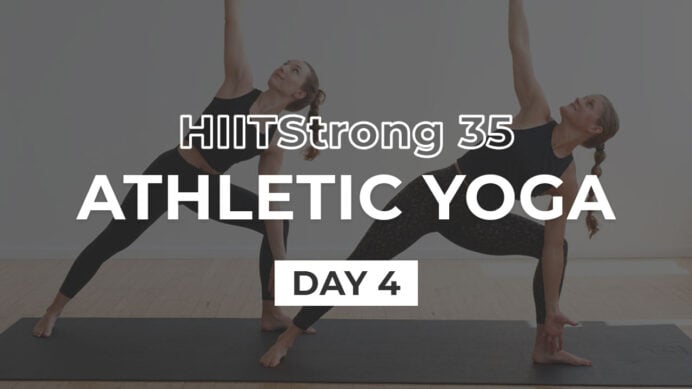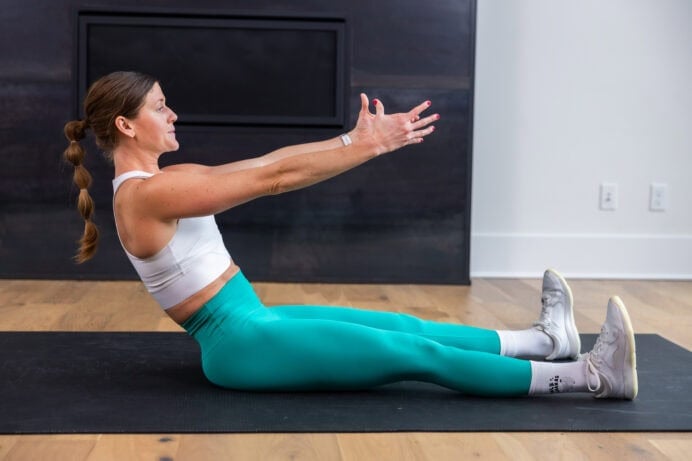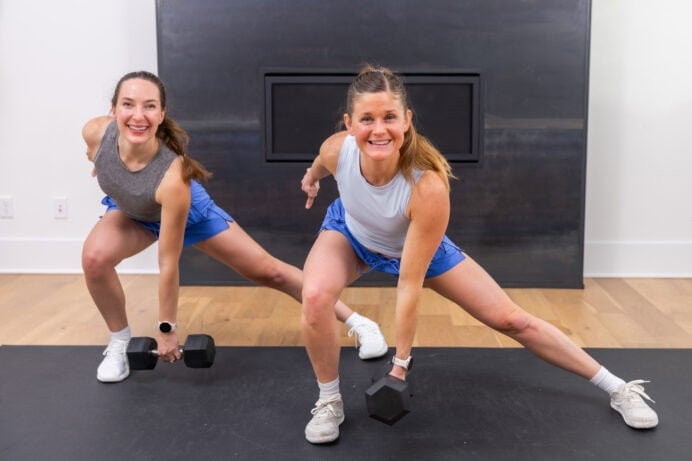
7 Ways To Master the Push-Up (Push-Up Variations)
Push ups are hard! So I’m sharing my 7 favorite push up modifications to help you build upper body and core strength; so you can master the push up and get off your knees.
Push-ups have always been hard for me, became even more of a challenge after I had my babies.
My postpartum fitness journey has made me appreciate exercise modifications (specifically push-up modifications!) more than ever.
If you can’t do push-ups from your toes, most people will drop to their knees to perform modified push ups. Although this isn’t a bad option, it’s also not your only choice.
So I’m sharing the 7 push-up modifications I’ve used over the past year to help me build strength and progress my push-ups. I prefer these modifications over dropping to your knees because they provide greater range of motion and prepare your body for the end goal: completing push-ups on your toes.
Because push-ups can, and should be, a standard part of your fitness routine — they are an effective bodyweight exercise that engage the chest, shoulders, triceps, and core!
7 Ways to Master The Push-Up
The goal is to use these 7 push–up modifications to increase upper body and core strength, so you can master the push–up and get off your knees. You might also benefit from adding chest exercises for women into your weekly workout routine.
Start with whatever variation challenges you most and perform 10-50 repetitions of that variation daily, because push-ups require consistent progress. Once you mast that variation, advance to the next, most challenging push-up variation.
- Alternating Plank Forearm Drops
- Incline Push-Up
- 3-Count Negative Kipping Push-Up
- Single-Count Kipping Push-Up
- 3-Point Push-Up
- Mini Loop Band Push-Up
- Wide Stance Push-Up
Alternating Plank Forearm Drops (Army Crawl)
One of my favorite exercises for building upper body strength, shoulder stability and core stability, which all contribute to successful push-ups.

How To Do Army Crawls:
- Start in high plank position with your shoulders stacked over your wrists; hands shoulder width apart. Pull your kneecaps up towards your belly and push your heels towards the wall behind you.
- Hold this position, maintaining a straight line with your body, gaze slightly in front of you.
- Drop your left forearm to the mat. Follow by dropping your right forearm to the mat so you are in a low plank position with your shoulders stacked over your elbows.
- Reverse the motion, pushing yourself up into high plank position by planting first your left palm, then your right palm on the mat.
- Continue this pattern, alternating leading arm with each rep.
Incline Push-Ups
The higher the stair and incline, the easier this exercise is. As you advance drop down stairs, decreasing the incline, making this exercise more challenging.

How To Do An Incline Push-Up
- Stand in front of your bench. The higher the surface, the easier the push-up will be.
- Plant your hands on the bench and step back into a high plank position. Shoulders are stacked over wrists, neutral spine.
- Hold this incline plank position, maintaining a straight line with your body, as you slowly lower your chest towards the bench. Lead with your chest, elbows fall about 6 inches away from your body (not out to the sides).
- Once at the bottom of your push-up, exhale as you push back up into high plank position.
3-Count Negative Kipping Push-Up
This variation focuses on the controlled lowering portion of a push-up rather than the upward push. This is a great way to build strength and control in the upper body.

How To Do Negative 3-Count Push-Ups (Eccentric Push Ups)
- Start in high plank position with your shoulders stacked over your wrists; hands shoulder width apart. Pull your kneecaps up towards your belly and push your heels towards the wall behind you.
- Lower your chest towards the ground on a 3-count, dropping to your knees when you need to (with a goal of not dropping to your knees until you’re at the bottom of the push-up).
- Then, keep your knees on the mat as you perform a kneeling push-up, coming into a modified high plank.
- Focus on keeping your core engaged, then pop to your toes, returning to a high plank position.
Single Count Kipping Push-Up
Progressing to a single-count eccentric push-up increases the intensity, allowing you to perform more reps.

How To Do Negative Push-Ups (Eccentric Push-Ups)
- Start in high plank position with your shoulders stacked over your wrists; hands shoulder width apart. Pull your kneecaps up towards your belly and push your heels towards the wall behind you.
- Lower your chest towards the ground on a single-count, dropping to your knees when you need to (with a goal of not dropping to your knees until you’re at the bottom of the push-up).
- Then, keep your knees on the mat as you perform a kneeling push-up, coming into a modified high plank.
- Focus on keeping your core engaged, then pop to your toes, returning to a high plank position.
3-Point Push-Up
If you’ve been doing push-ups on your knees, this is a great modification to try. It increases the intensity by floating one leg but still provides support and stability from one knee on the ground.
How To Do 3-Point Push-Ups
- Begin in a kneeling push-up position, both knees on the ground and hands stacked under shoulders, slightly wider than shoulder-width apart.
- Then, keep your left knee on the ground as you lift your right leg, extending it backwards. Keep your right leg straight and point your toes to engage your glutes. Your body should form a straight line from your head to your right toes.
- Bend your elbows and slowly lower your chest towards the ground, elbows falling back towards your hips. Engage your core to protect your lower back.
- Then, press evenly through your fingers to push back up, straightening your elbows and returning to starting position.
Mini Loop Band Push-Up
The mini resistance band will bear some of the upper body load, assisting you as you push back up to the top of your push-up.
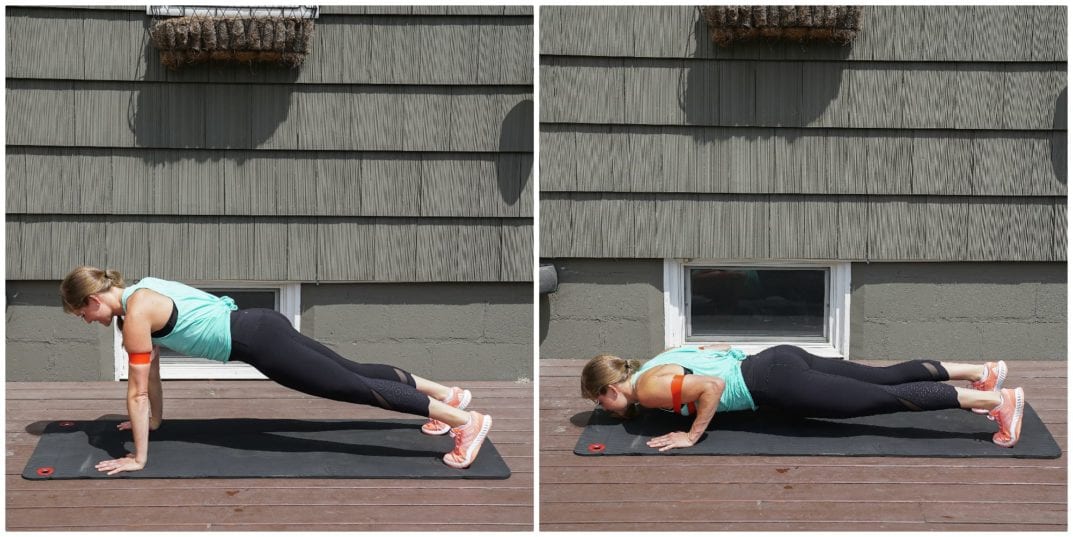
How To Make Push-Ups Easier With A Resistance Band
- Place a mini loop resistance band around your upper arms, about six inches above your elbows.
- Start in high plank position with your shoulders stacked over your wrists; hands shoulder width apart. Pull your kneecaps up towards your belly and push your heels towards the wall behind you.
- With control, lower your chest towards the ground, letting your elbows fall back towards your body. Think about keeping your core engaged and your back flat.
- Press evenly through your palms to press the mat away, returning to a high plank position.
Wide Stance Push-Up
Taking a wider stance provides you with more stability support. This is a great modification if core strength is your limiting factor when it comes to push-ups.
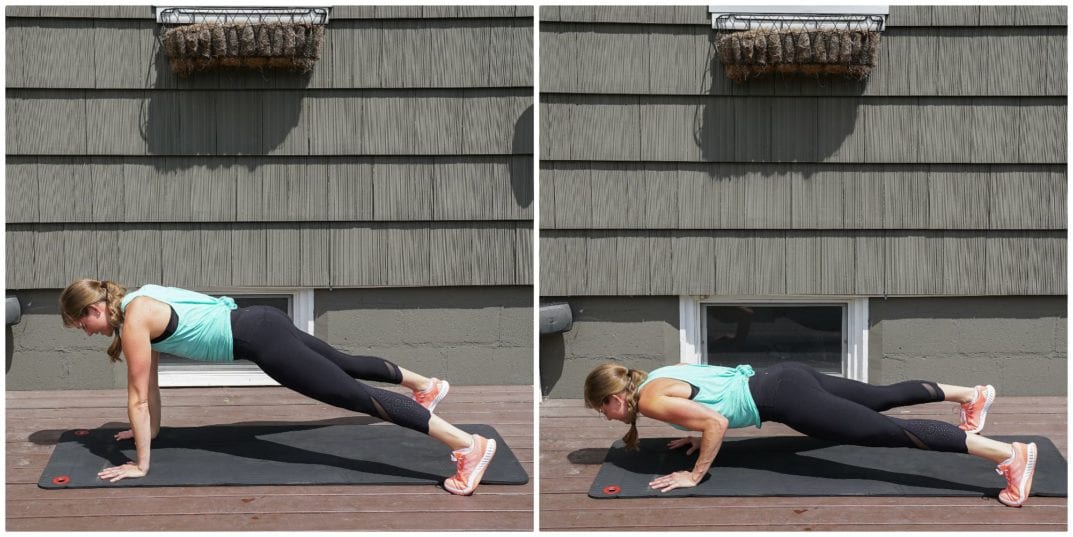
How To Do Wide Stance Push-Ups
- Start in high plank position with your shoulders stacked over your wrists; hands shoulder width apart. Step your feet wide (if you’re on a yoga mat, they should be on the outer edges of the mat).
- With control, lower your chest towards the ground, letting your elbows fall back towards your body. Think about keeping your core engaged and your back flat.
- Press evenly through your palms to press the mat away, returning to a high plank position.
Push Up Modifications FAQs
A push-up is a bodyweight exercise that primarily targets the the chest (pectoralis major), triceps, shoulders and core. The push-up is a great compound exercise as it engages many muscle groups at once.
While lifting weights is an important part of any fitness routine, bodyweight exercises are also beneficial. Push-ups use your bodyweight as resistance, making them a versatile and functional exercise that can be done anywhere. By building strength in your upper body and core, push ups can improve your posture.
When I started training for my first Murph Workout, the push-up portion of the challenge was extremely intimidating to me. Push-ups are a difficult exercise for many people, even if you’re extremely fit. They require lifting your entire body weight using your upper body and core strength – which many people struggle with.
Pin These Push-Up Modifications
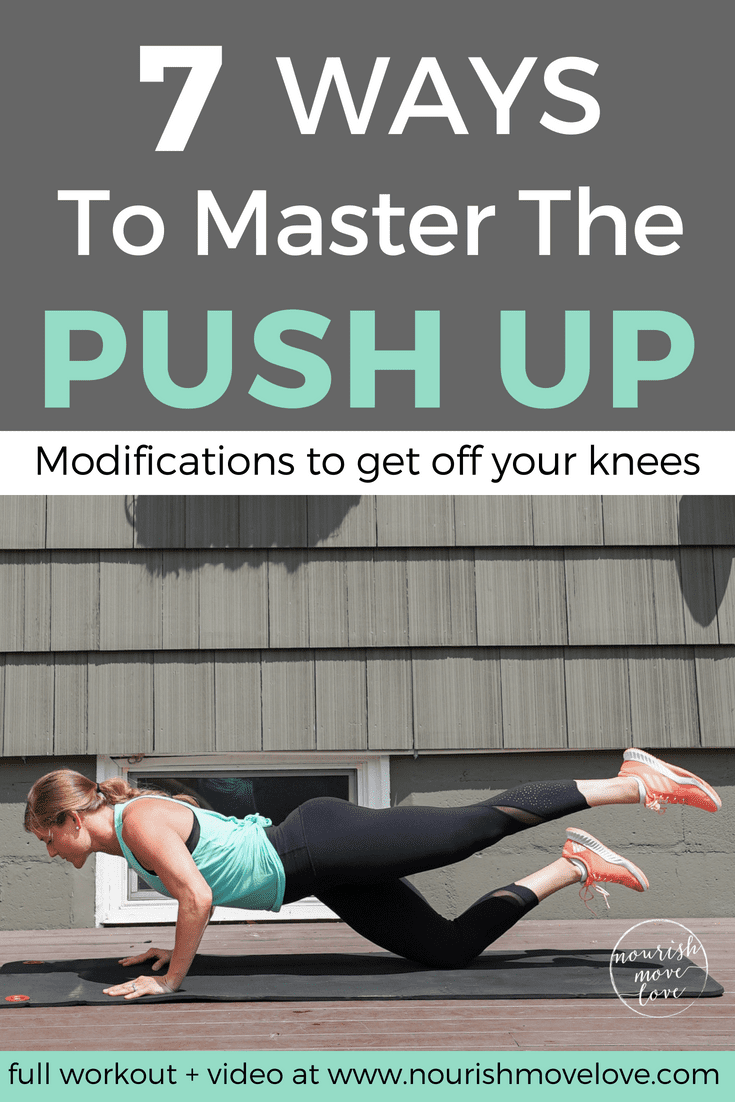
This post includes affiliate links. I do earn a commission for products purchased using these links (at no additional cost to you). Thank you for supporting Nourish Move Love, making the content you see on this blog possible.










